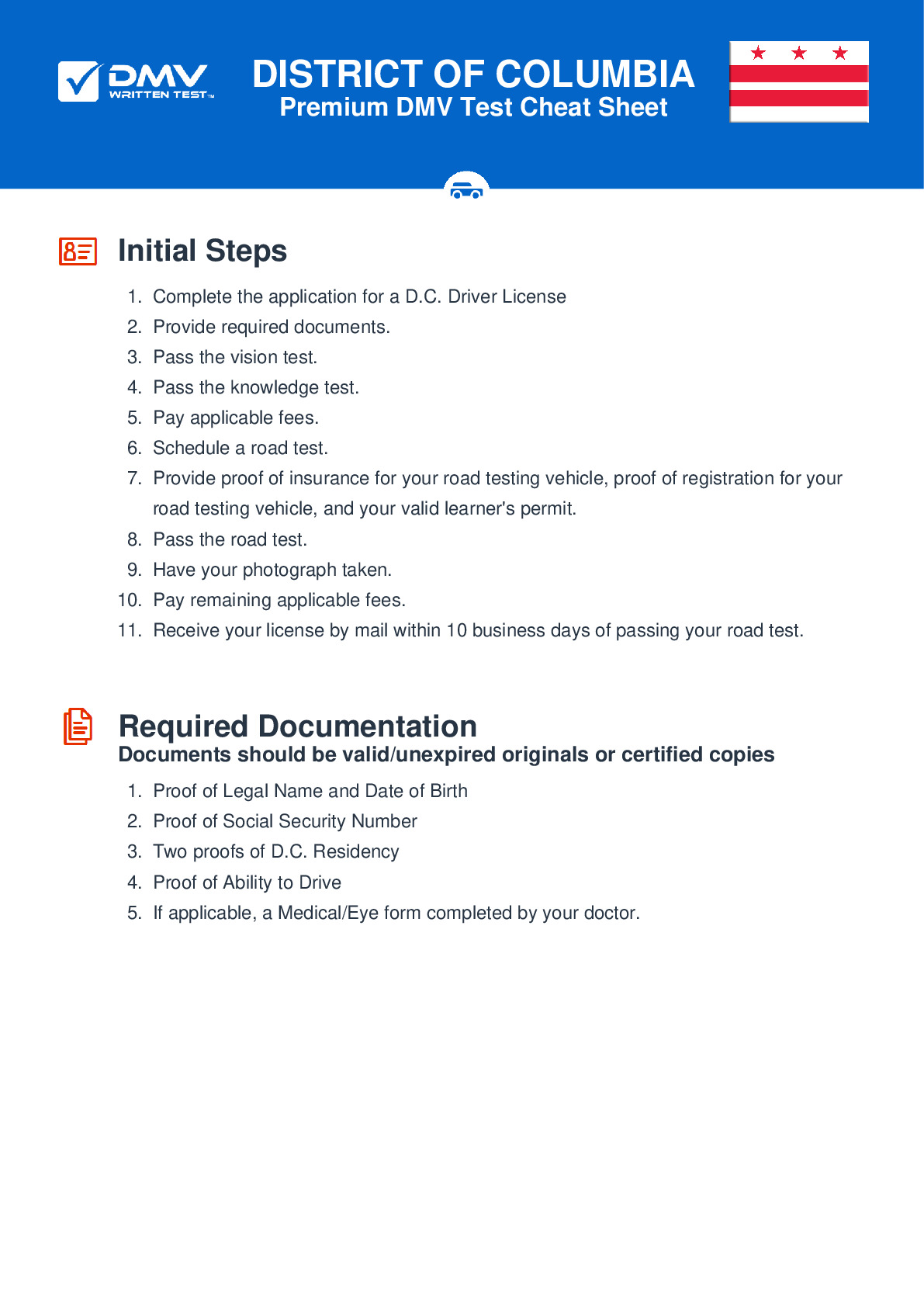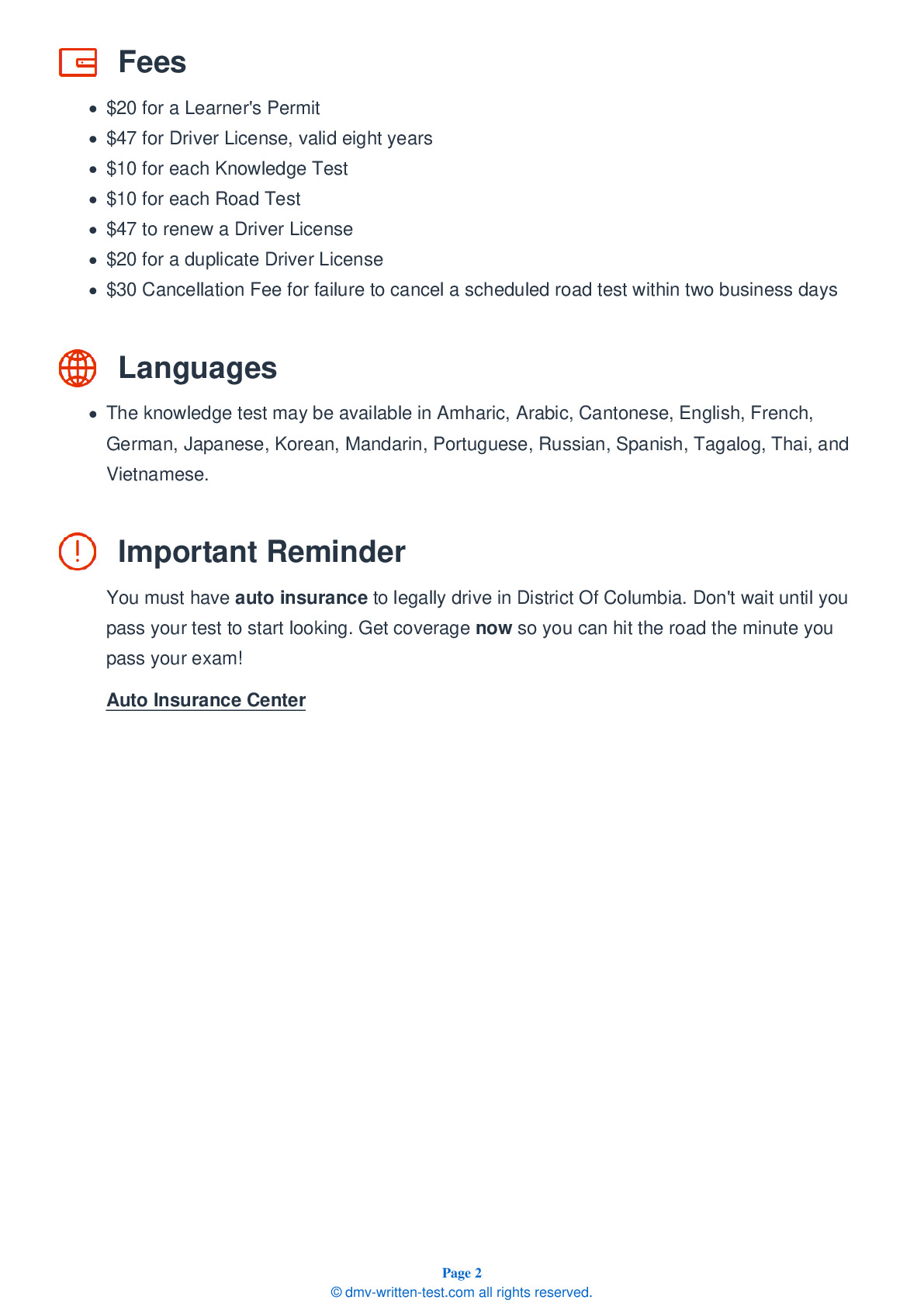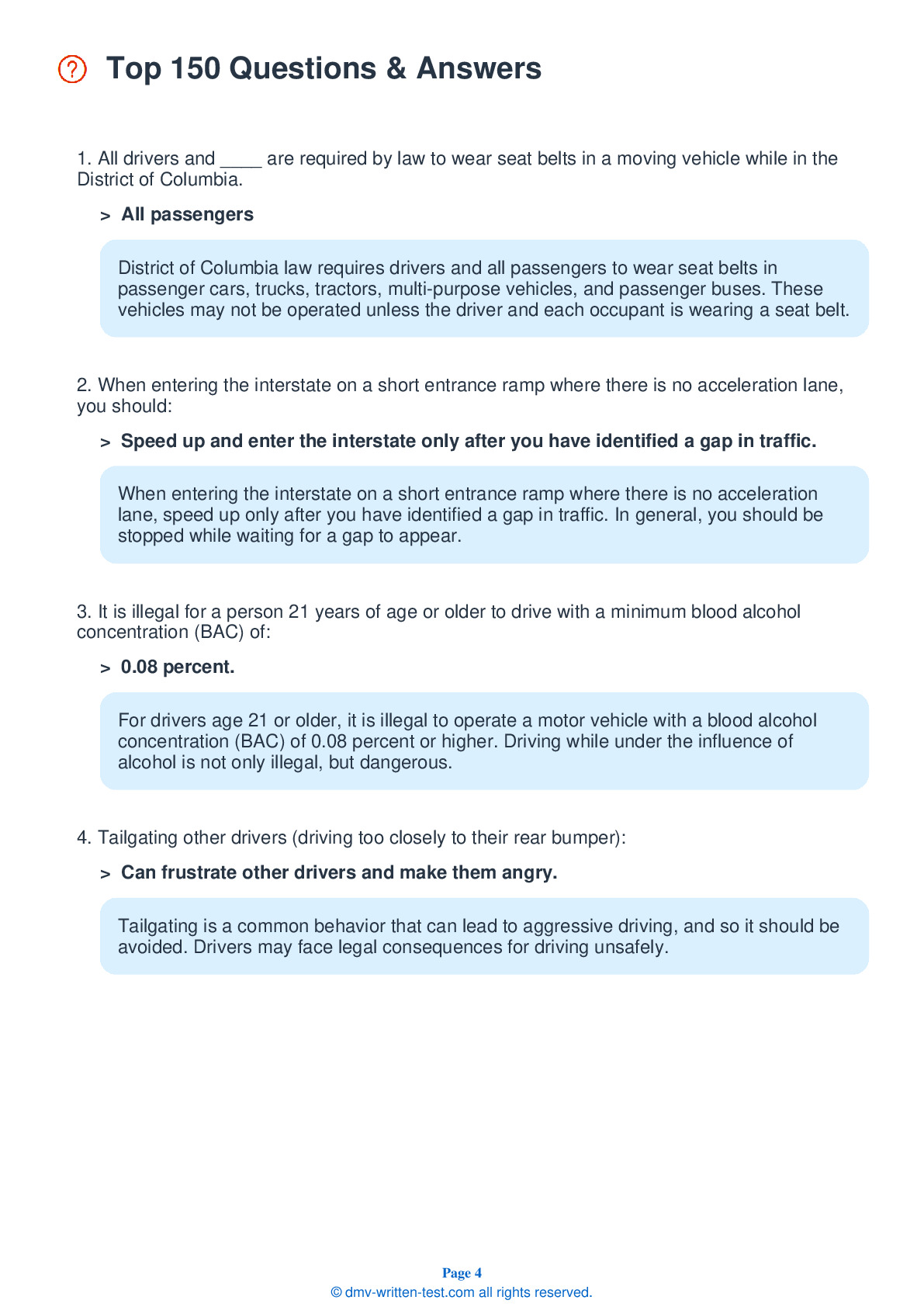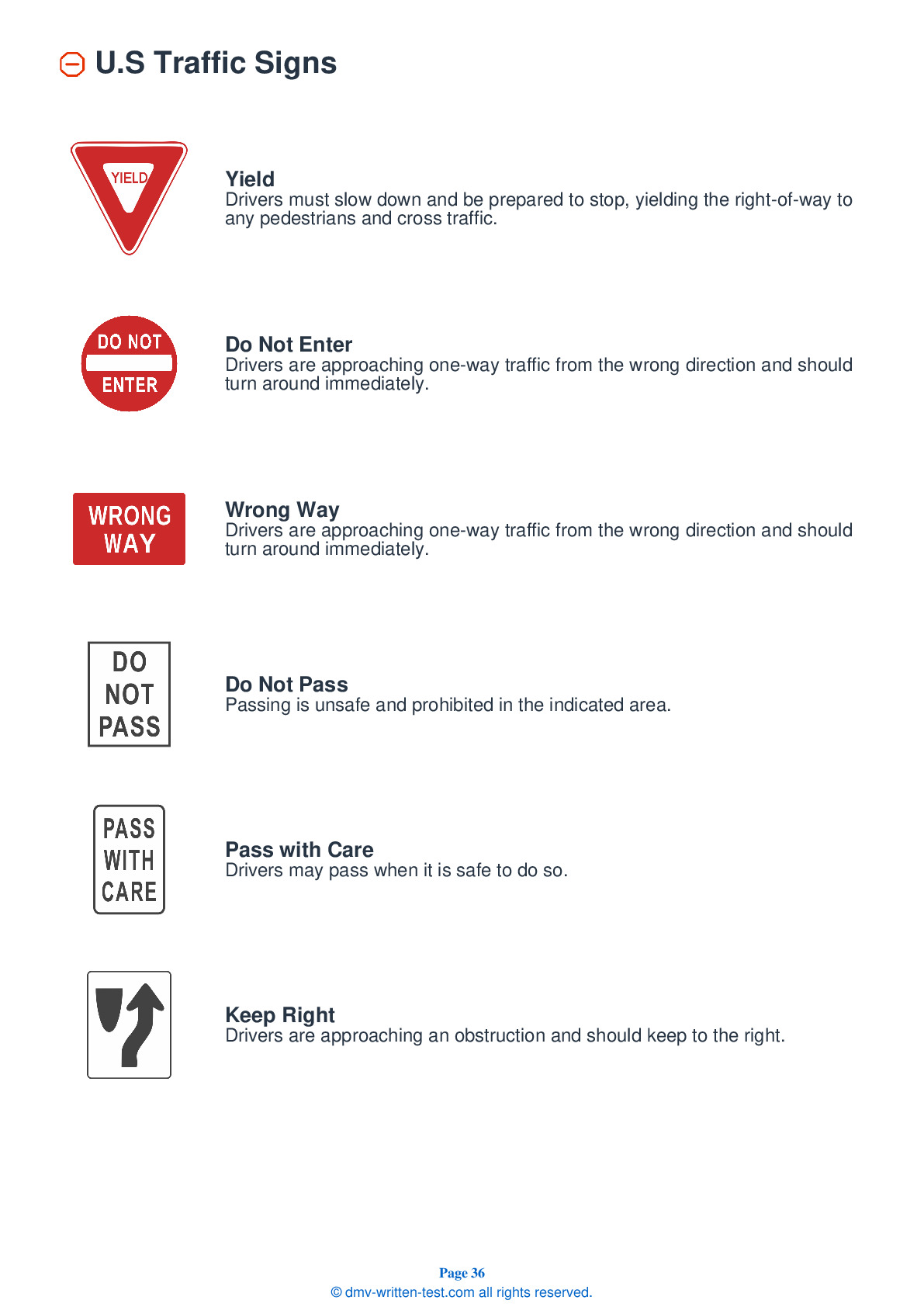2025 District Of Columbia Permit Test 15
The following questions are from real DMV written tests. These are some of the actual permit questions you will face in District Of Columbia. Each permit practice test question has three answer choices. Select one answer for each question and select "grade this section." You can find this button at the bottom of the drivers license quiz. For a complete list of questions and answers for District Of Columbia please visit https://cheat-sheets.dmv-written-test.com/en/district-of-columbia/car.
Number of Tests
Number of Question
Passing Score
1. If you see orange construction signs and cones on a freeway, you must:
Explanation
As you enter a work zone, signs and message boards will warn you of workers, slow-moving equipment, and/or closed lanes ahead. You should reduce your speed and be prepared to slow down or stop.
2. You are driving when it begins to rain. You should:
Explanation
When heavy rain reduces visibility, reduce your speed. Turn on your headlights so other drivers can see your vehicle. If the rain is so heavy that you are unable to see clearly, drive onto the shoulder and stop until the rain lets up.
3. If your car begins to skid out of control, you should:
Explanation
If your vehicle begins to skid, stay off the brakes. Continue to correct your steering until the vehicle is back under your control and moving safely down the road.
4. This sign means:

Explanation
This sign warns that especially slippery conditions exist when the road is wet.
5. The amount of alcohol in the blood is referred to as:
Explanation
Blood alcohol concentration (BAC) is a measurement of the percentage of alcohol in the blood. The higher the BAC number, the more impaired a person is.
6. Which of the following is a dangerous habit when driving in work zones?
Explanation
When driving in a work zone, adjust your speed for the traffic conditions and don't follow other vehicles too closely. Be attentive to workers and machines in the work zone.
7. At a railroad crossing, you must:
Explanation
You must approach all railroad crossings with extreme caution and cross only when you know that no train is coming from either direction. Be aware of vehicles that must stop at all railroad crossings, such as school buses and trucks carrying hazardous materials.
8. If bad weather makes it difficult for you to see clearly, you should:
Explanation




